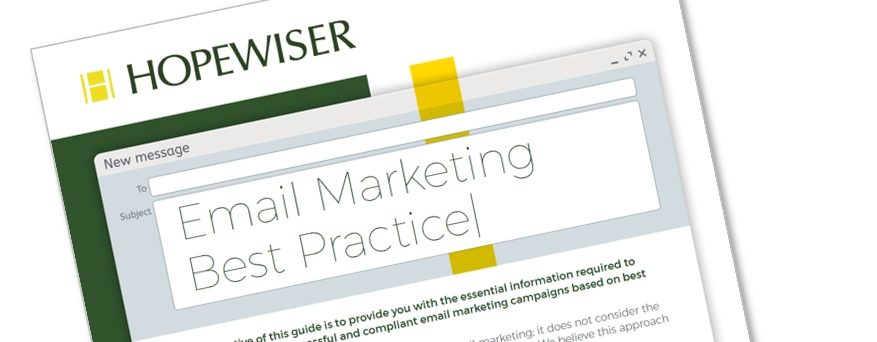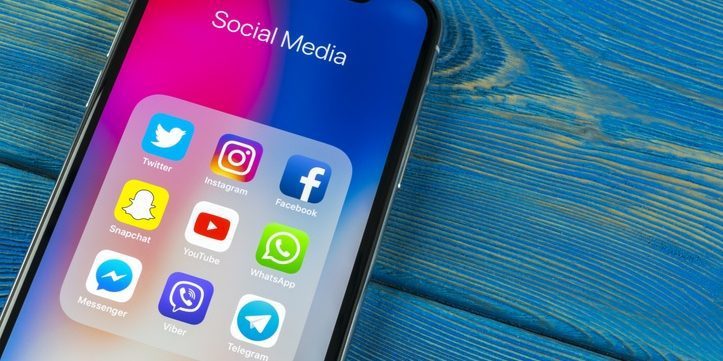There’s no shortage of suppliers offering email lists to purchase or to rent and whether these are worthwhile for your needs depends on many factors. Certainly, the reputation of the supplier is important and so too is how closely the contacts on the list match your target audience. You should always review the demographic data of any list you are considering.
Equally important is whether the supplier can assure you that those contacts have explicitly opted-in to receive emails from 3rd-parties. Get that in writing!
However, engagement will typically be lower from a 3rd-party list than building your own email list organically. So how can that be achieved? This is where zero-party data and first- party data are relevant.
Zero-party data is just the industry term for personal information a contact provides to you willingly i.e. with consent. That could include their name, phone number and company. To build your list using zero-party data you need to think in terms of an exchange: you offer a gated asset – it could be a guide, whitepaper, or just more information (a contact form) – and the contact will provide their details in exchange.
First-party data is typically gained from an interaction with a contact, usually their website activity and transaction data if you have an ecommerce business. First-party data is still consensual if you provide the ability for a contact to opt-out of website analytics. By combining zero-party data with first-party data you have much greater flexibility to segment your list and therefore improved targeting and personalisation.
SEGMENTATION
Segmentation is when you identify groups of contacts who share a common attribute or interest that you hold as data in your list.
For example, contacts within specified age bands, contacts who have purchased or viewed a product or service on your website, or contacts who are within 50-miles of your organisation’s office for event invitations.
Segmentation is important because you can create email content that is tailored to a very specific audience. This will increase the relevance of the email to that audience and will usually improve engagement, including more opens and more click-throughs on the links within the email. Segmentation is only limited by the available zero-party data and first-party data you hold, and by your imagination!
THE UNSUBSCRIBE PROCESS
All your promotional emails must have an unsubscribe link to be GDPR compliant, and it’s good for your reputation too! When an individual clicks this link, the ESP will automatically unsubscribe that individual by adding their email to an unsubscribe list (or suppression list) and they will no longer receive your email campaigns. Most ESPs allow you to configure the unsubscribe list so it is applied globally or to a specific list. It’s important to understand the difference.
As an example, suppose you have a contact who has subscribed to two of your lists: one list is for newsletter opt-ins and the other list contains competition entries. If you have configured your unsubscribe as being specific to a list, when that contact unsubscribes from a newsletter email you’ve sent them, they will no longer receive your newsletter; however, they will still receive emails you send to your competition list.
This is why it is best practice to configure your unsubscribes as a global suppression list so that unsubscribed contacts will receive NO future emails irrespective of which of your lists include them, avoiding compromise to your brand and reputation.
You also need to give special consideration to individuals who unsubscribe by contacting your organisation by replying to your emails or by calling you by phone: where does that opt-out get recorded and how is it added to your ESP unsubscribe list? This can be achieved manually, however, the best approach is to automatically synchronise your master lists in your preferred Customer Relationship Management (CRM) with the lists held by your ESP.
THE UNSUBSCRIBE PROCESS
All your promotional emails must have an unsubscribe link to be GDPR compliant, and it’s good for your reputation too! When an individual clicks this link, the ESP will automatically unsubscribe that individual by adding their email to an unsubscribe list (or suppression list) and they will no longer receive your email campaigns. Most ESPs allow you to configure the unsubscribe list so it is applied globally or to a specific list. It’s important to understand the difference.
As an example, suppose you have a contact who has subscribed to two of your lists: one list is for newsletter opt-ins and the other list contains competition entries. If you have configured your unsubscribe as being specific to a list, when that contact unsubscribes from a newsletter email you’ve sent them, they will no longer receive your newsletter; however, they will still receive emails you send to your competition list.
This is why it is best practice to configure your unsubscribes as a global suppression list so that unsubscribed contacts will receive NO future emails irrespective of which of your lists include them, avoiding compromise to your brand and reputation.
You also need to give special consideration to individuals who unsubscribe by contacting your organisation by replying to your emails or by calling you by phone: where does that opt-out get recorded and how is it added to your ESP unsubscribe list? This can be achieved manually, however, the best approach is to automatically synchronise your master lists in your preferred Customer Relationship Management (CRM) with the lists held by your ESP.
SUNSETTING CONTACTS
Sunsetting is a list clean-up process that can be controversial in many organisations!
Why? Because it is a process of identifying any non-engaging (and non-purchasing contacts) and removing them from all of your future communications i.e. opting them out without those contacts making that request. Reducing the number of contacts in your list may appear counterintuitive, but there are benefits to doing so.
The most obvious is it will help your sender reputation with your ESP and with receiving email servers – they don’t like seeing emails that are never opened and/or clicked, they look spammy! And if a contact is not engaging with your emails over an extended period, you’re just shouting, and nobody is listening…
Removing long-term, unengaged contacts also improves your email metrics so they better reflect the actual performance of your campaigns. Finally, you’re paying for those unengaged contacts; removing them and reducing your list size may drop you to a lower subscription tier with your ESP. The criteria for sunsetting are flexible and you should experiment with segmentation before removing contacts. However, a good starting point is:
• Non-opens/clicks from past 6+ email campaigns AND
• Have never purchased AND
• Have not been active on your website for the past 3-months.
THERE’S MORE…
List Management is a vital element of any email marketing campaign, but there is so much more in our full guide to Email Marketing, including sections on Email Deliverability, Content Creation, Testing & Sending, Measuring Campaign Performance, and GDPR/Privacy Considerations.
, updated 1st May 2025.






